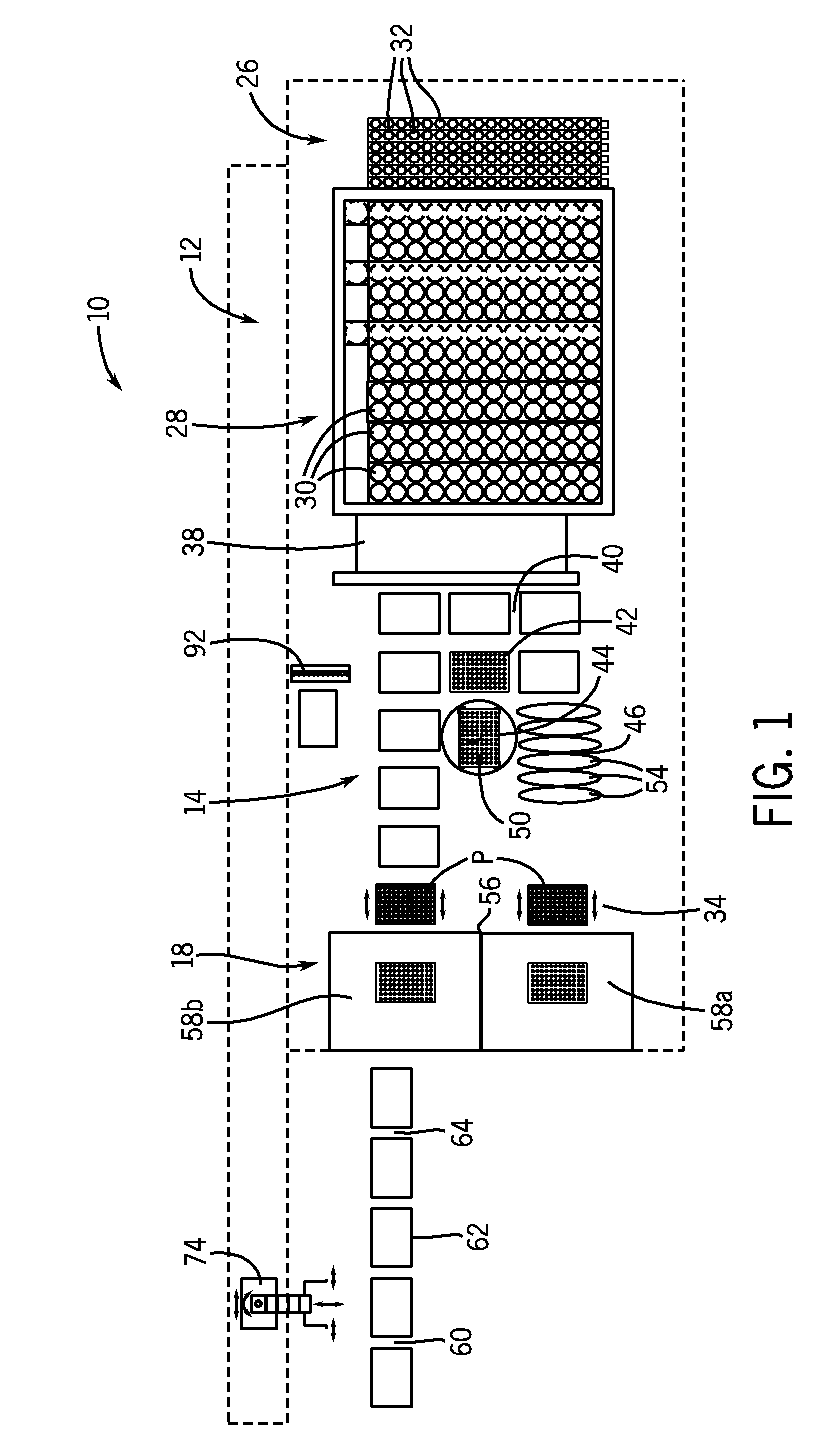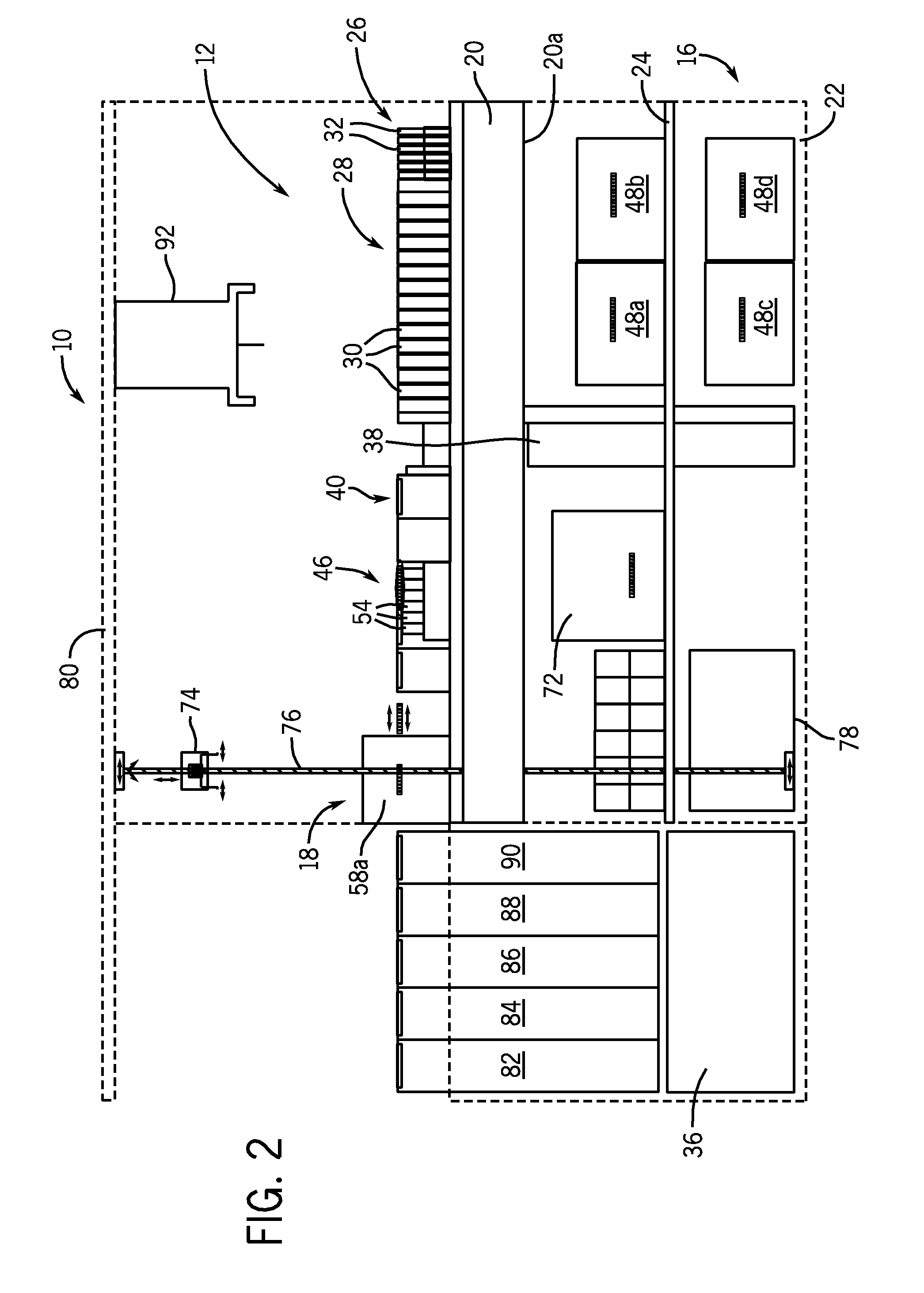System for managing inventory of bulk liquids
a technology for managing inventory and liquids, applied in the direction of instruments, chemical methods analysis, material analysis, etc., can solve the problems of large volume of liquid waste and solid waste generation, high cost, and inability to adapt the automated analyzer to suit the demands of certain users, so as to simplify the reading of liquid levels, reduce labor requirements, and reduce cost
- Summary
- Abstract
- Description
- Claims
- Application Information
AI Technical Summary
Benefits of technology
Problems solved by technology
Method used
Image
Examples
Embodiment Construction
[0029]As used herein, the expression “bulk liquid” means a liquid, typically a reagent, a diluent, or some other type of treating agent in liquid form, which liquid is provided in a relatively large volume, e.g., one liter or greater. As used herein, the term “impending” means about to take place.
[0030]As used herein, the term “immunoassay” means a biochemical test that measures the concentration of a substance in a biological liquid, typically serum, using the reaction of an antibody or antibodies to its (their) antigen. An immunoassay takes advantage of the specific binding of an antibody to its antigen. As used herein, a “chemiluminescent microparticle immunoassay”, alternatively referred to as “chemiluminescent magnetic immunoassay”, involves a chemiluminescent label conjugated to the antibody or the antigen. In this assay, a magnetic microparticle is coated with antibodies. The assay is intended to look for antigens in the sample. A second antibody is labeled with a chemilumine...
PUM
| Property | Measurement | Unit |
|---|---|---|
| volume | aaaaa | aaaaa |
| volume | aaaaa | aaaaa |
| volume | aaaaa | aaaaa |
Abstract
Description
Claims
Application Information
 Login to View More
Login to View More - R&D
- Intellectual Property
- Life Sciences
- Materials
- Tech Scout
- Unparalleled Data Quality
- Higher Quality Content
- 60% Fewer Hallucinations
Browse by: Latest US Patents, China's latest patents, Technical Efficacy Thesaurus, Application Domain, Technology Topic, Popular Technical Reports.
© 2025 PatSnap. All rights reserved.Legal|Privacy policy|Modern Slavery Act Transparency Statement|Sitemap|About US| Contact US: help@patsnap.com



